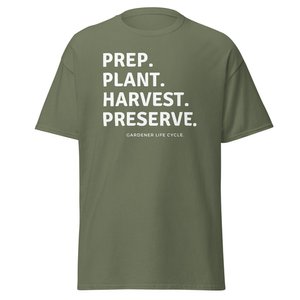You’ve Got a Friend in Me: Complete Guide to Companion Planting in Your Garden
Companion planting is a time-tested gardening technique that involves strategically planting different crops together to create a more productive, pest-resistant, and healthy garden. Whether you're a beginner or an experienced gardener, understanding which plants work best together can transform your garden into a thriving, resilient ecosystem. Let's explore the basics of companion planting and see how it can help your plants flourish.
The Basics of Companion Planting
Companion planting harnesses the natural interactions between different plant species. Certain plants, when grown together, benefit each other by repelling pests, improving soil quality, or encouraging growth. Some popular examples of companion planting include pairing herbs with vegetables to deter insects or combining tall plants with ground cover crops to make the most of garden space.
At its core, companion planting is about balance—each plant supports its neighbor in some way, whether by shading, fixing nitrogen in the soil, or even offering structural support. Instead of monocultures, where a single crop dominates, companion planting creates diverse groupings that lead to healthier, more resilient plants.
Classic Companion Pairings
Here are some classic companion plant combinations that can work wonders in your garden:
Tomatoes and Basil: This pairing is beloved not just in the kitchen, but also in the garden. Basil helps repel pests like aphids, whiteflies, and mosquitoes, while the aromatic herb is believed to enhance the flavor of tomatoes. Plus, growing these two together saves space.
Corn, Beans, and Squash (The Three Sisters): This traditional Native American planting trio is a classic example of symbiotic growing. Corn provides a natural trellis for the beans, beans fix nitrogen into the soil, and squash acts as a living mulch, shading the soil to retain moisture and suppress weeds.
Carrots and Onions: Onions help repel carrot flies, while carrots benefit from the aromatic defense that onions provide against other pests. Both root crops grow well together without competing for the same resources.
Marigolds with Just About Anything: Marigolds are a gardener's best friend when it comes to pest control. Their strong scent deters many common pests, and their roots can repel nematodes that attack vegetables. Planting marigolds around the perimeter of your garden beds or near vulnerable plants helps create a natural pest barrier.
Cabbage and Dill: Dill is a great companion to members of the cabbage family, such as broccoli, kale, and cauliflower. Dill attracts beneficial insects like ladybugs and parasitic wasps that prey on cabbage worms, making it an ideal partner for these leafy crops.

Gardener Life Cycle Tee
Celebrate the gardener's journey with this fun and stylish tee! Perfect for plant lovers and green thumbs.
Shop NowPlants to Keep Apart
While some plants make great companions, others should be kept at a distance to avoid issues such as stunted growth or pest problems. For example, avoid planting fennel near most vegetables, as it can inhibit their growth. Similarly, beans and onions tend to clash—beans prefer the soil to be free of onion's sulfuric compounds, which can inhibit their growth.
Pest Control and Soil Health
One of the best benefits of companion planting is its natural approach to pest control. Instead of relying on chemical pesticides, you can use plants like chives or garlic to repel aphids, or nasturtiums to lure pests away from your vegetables as a "trap crop." Additionally, plants like clover and peas help fix nitrogen in the soil, making it more fertile for the next crop you plant.
Using diverse plantings also helps break up pest cycles. Pests are often attracted to monocultures, where they can easily feast on a single crop. Mixing things up confuses pests and helps prevent infestations from taking hold.
Designing Your Garden
When planning your companion planting layout, think about your garden's unique needs. What pests are common in your area? Which crops do you want to focus on? Use taller plants, like sunflowers or corn, to create natural shade for smaller crops like lettuce, which can struggle under direct sun. Likewise, use sprawling squash to provide a natural mulch under taller, upright plants.
A Few Tips to Get Started
Start Small: If you're new to companion planting, try starting with one or two easy combinations, like tomatoes and basil or carrots and onions. This will give you a sense of how different plants interact without overwhelming you.
Observe and Adjust: Companion planting is about experimentation. Watch how your plants respond and be ready to make adjustments if some combinations aren’t working as well as you'd hoped.
Use Flowers for Pollinators: Adding flowers like lavender, alyssum, or borage to your garden will attract pollinators like bees and butterflies, helping ensure your fruiting vegetables get pollinated.
Conclusion
Companion planting is a wonderful way to make the most of your garden space while promoting healthier plants and reducing pests naturally. By strategically pairing plants, you can create a more self-sustaining garden that thrives without relying heavily on chemicals or labor-intensive pest control methods. Plus, watching your garden work in harmony can be a truly rewarding experience for any gardener.
Are you ready to give companion planting a try? Start small, have fun, and let your garden teach you along the way—after all, nature has a way of showing us what works best.


